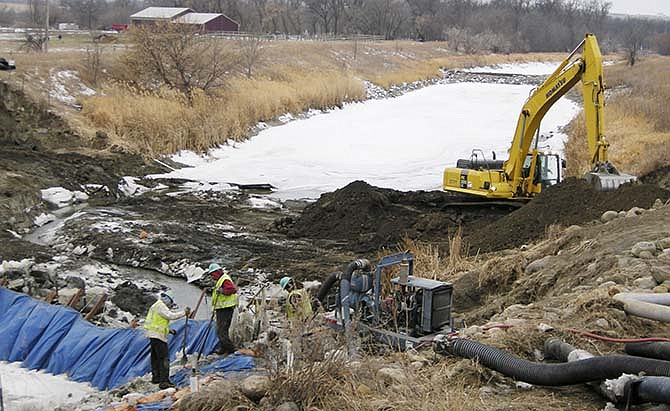BISMARCK, N.D. (AP) - North Dakota officials believe a federal study of a large Missouri River water project in the state has adequately addressed fears of environmental harm in the state of Missouri and the Canadian province of Manitoba.
However, they're still resigned to the likely continuation of a drawn-out legal fight that has already delayed the Northwest Area Water Supply project for more than a decade.
"I'd like for it to be concluded in the near future, but I'm not optimistic enough to think that that would be the case," said Tim Freije, NAWS project manager for the State Water Commission.
NAWS was first authorized by Congress in 1986. It is projected to bring Missouri River water to 82,000 people in northwestern North Dakota by 2060, if it is built. But Manitoba sued in 2002, when construction began, over fears that it would result in the transfer of harmful organisms to its waters, and Missouri sued in 2009 over concerns about a depletion of river water. The river provides water to 3 million people in Missouri and is vital to the state's shipping and agriculture industries.
U.S. District Judge Rosemary Collyer in Washington, D.C., later combined the lawsuits and ordered more environmental study.
The final environmental report released by the U.S. Bureau of Reclamation this week calls for the addition of filtration to previously recommended river water treatment methods of chlorination and ultraviolet disinfection. It also concludes NAWS would use less than 1 percent of the storage capacity in the Missouri River basin, and that potential effects of climate change on the river would more than offset project water withdrawals.
Manitoba water officials said they are still reviewing the report, but Missouri appears ready to continue fighting NAWS.
"We remain committed to protecting the rights of Missourians who rely upon the river to transport agricultural products," Eric Slusher, spokesman for Missouri Attorney General Chris Koster, said in a statement to The Associated Press.
The lawsuit has not completely stopped the project.
Collyer has allowed some construction to take place, including pipeline construction up until about two years ago. About 240 miles of the planned 300 miles of pipeline are in the ground, and as many as 30,000 people are getting water - albeit treated groundwater through Minot's water plant until the river water treatment dispute is settled. After a 30-day public comment period on the government's environmental report, Interior Secretary Sally Jewell will issue a final decision to Collyer, who will then proceed with the lawsuit.
The more stringent water treatment called for in the final study would increase the cost of NAWS from $207 million to $244 million. The federal government's share is 65 percent, though if Congress does not appropriate the entire amount, it would fall on the state to make up the shortfall.
About $116 million has been spent so far, according to Freije. Of that, $52 million has come from the federal government, $29 million from the state and $35 million from a Minot city sales tax.
Sales tax proceeds currently are going to other uses such as infrastructure projects and property tax relief. With the expected rise in the cost of the NAWS project, "I fully expect our 1 cent sales tax will need to be directed back to NAWS for 3-5 years, dependent on sales tax collections," city Public Works Director Dan Jonasson said in an email.

